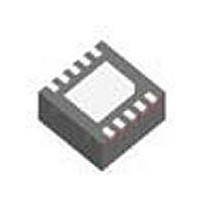LM4665LD National Semiconductor, LM4665LD Datasheet - Page 9

LM4665LD
Manufacturer Part Number
LM4665LD
Description
Manufacturer
National Semiconductor
Datasheet
1.LM4665LD.pdf
(18 pages)
Specifications of LM4665LD
Operational Class
Class-AB
Audio Amplifier Output Configuration
1-Channel Mono
Output Power (typ)
1.4x1@8OhmW
Audio Amplifier Function
Speaker
Total Harmonic Distortion
0.8@8Ohm@400mW%
Single Supply Voltage (typ)
3/5V
Dual Supply Voltage (typ)
Not RequiredV
Power Supply Requirement
Single
Rail/rail I/o Type
No
Power Supply Rejection Ratio
52dB
Single Supply Voltage (min)
2.7V
Single Supply Voltage (max)
5.5V
Dual Supply Voltage (min)
Not RequiredV
Dual Supply Voltage (max)
Not RequiredV
Operating Temp Range
-40C to 85C
Operating Temperature Classification
Industrial
Mounting
Surface Mount
Pin Count
10
Package Type
LLP EP
Lead Free Status / Rohs Status
Not Compliant
Available stocks
Company
Part Number
Manufacturer
Quantity
Price
Company:
Part Number:
LM4665LD
Manufacturer:
BROADCOM
Quantity:
27 159
Typical Performance Characteristics
Application Information
GENERAL AMPLIFIER FUNCTION
The output signals generated by the LM4665 consist of two,
BTL connected, output signals that pulse momentarily from
near ground potential to V
independently with the exception that they both may never
pulse simultaneously as this would result in zero volts across
the BTL load. The minimum width of each pulse is approxi-
mately 160ns. However, pulses on the same output can
occur sequentially, in which case they are concatenated and
appear as a single wider pulse to achieve an effective 100%
duty cycle. This results in maximum audio output power for a
given supply voltage and load impedance. The LM4665 can
achieve much higher efficiencies than class AB amplifiers
while maintaining acceptable THD performance.
The short (160ns) drive pulses emitted at the LM4665 out-
puts means that good efficiency can be obtained with mini-
mal load inductance. The typical transducer load on an audio
amplifier is quite reactive (inductive). For this reason, the
load can act as it’s own filter, so to speak. This "filter-less"
switching amplifier/transducer load combination is much
more attractive economically due to savings in board space
and external component cost by eliminating the need for a
filter.
POWER DISSIPATION AND EFFICIENCY
In general terms, efficiency is considered to be the ratio of
useful work output divided by the total energy required to
produce it with the difference being the power dissipated,
typically, in the IC. The key here is “useful” work. For audio
systems, the energy delivered in the audible bands is con-
sidered useful including the distortion products of the input
signal. Sub-sonic (DC) and super-sonic components
(
flowing from the power supply and the audio band power
being transduced is dissipated in the LM4665 and in the
transducer load. The amount of power dissipation in the
LM4665 is very low. This is because the ON resistance of the
switches used to form the output waveforms is typically less
than 0.25Ω. This leaves only the transducer load as a po-
>
22kHz) are not useful. The difference between the power
V
DD
Shutdown Hysteresis Voltage
= 3V, SD Mode = GND (SD High)
DD
. The two outputs can pulse
200270B0
9
(Continued)
tential "sink" for the small excess of input power over audio
band output power. The LM4665 dissipates only a fraction of
the excess power requiring no additional PCB area or cop-
per plane to act as a heat sink.
DIFFERENTIAL AMPLIFIER EXPLANATION
As logic supply voltages continue to shrink, designers are
increasingly turning to differential analog signal handling to
preserve signal to noise ratios with restricted voltage swing.
The LM4665 is a fully differential amplifier that features
differential input and output stages. A differential amplifier
amplifies the difference between the two input signals. Tra-
ditional audio power amplifiers have typically offered only
single-ended inputs resulting in a 6dB reduction in signal to
noise ratio relative to differential inputs. The LM4665 also
offers the possibility of DC input coupling which eliminates
the two external AC coupling, DC blocking capacitors. The
LM4665 can be used, however, as a single ended input
amplifier while still retaining it’s fully differential benefits. In
fact, completely unrelated signals may be placed on the
input pins. The LM4665 simply amplifies the difference be-
tween the signals. A major benefit of a differential amplifier is
the improved common mode rejection ratio (CMRR) over
single input amplifiers. The common-mode rejection charac-
teristic of the differential amplifier reduces sensitivity to
ground offset related noise injection, especially important in
high noise applications.
PCB LAYOUT CONSIDERATIONS
As output power increases, interconnect resistance (PCB
traces and wires) between the amplifier, load and power
supply create a voltage drop. The voltage loss on the traces
between the LM4665 and the load results is lower output
power and decreased efficiency. Higher trace resistance
between the supply and the LM4665 has the same effect as
a poorly regulated supply, increase ripple on the supply line
also reducing the peak output power. The effects of residual
trace resistance increases as output current increases due
to higher output power, decreased load impedance or both.
To maintain the highest output voltage swing and corre-
sponding peak output power, the PCB traces that connect
vs Supply Voltage
R
Supply Current
L
= 8Ω + 33µH
20027002
www.national.com











